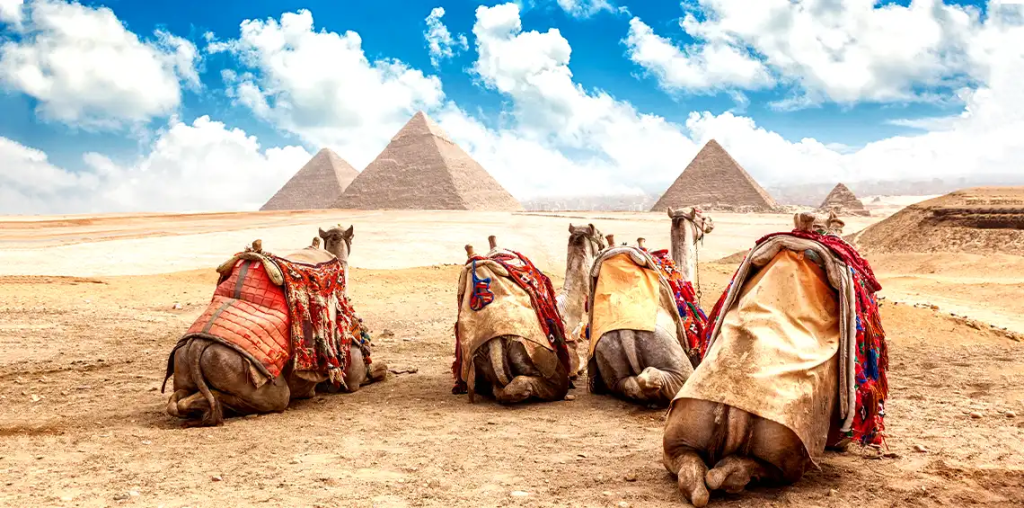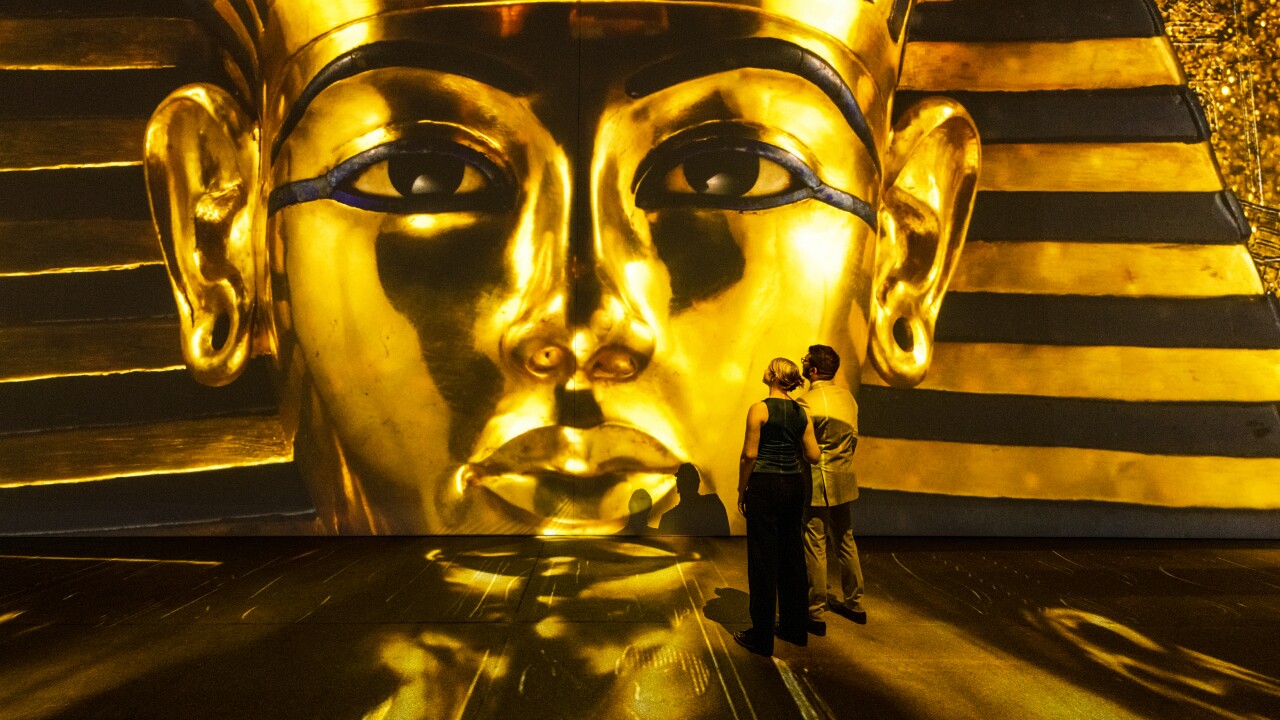
In the heart of Egypt’s ancient landscape, the Pyramid Complex of Pepi I stands as a testament to the grandeur and legacy of one of Egypt’s long-reigning pharaohs. Constructed during the Sixth Dynasty, this complex is a tribute to Pharaoh Pepi I’s rule and the enduring significance of pyramid architecture in ancient Egypt. In this comprehensive blog post, we delve into the captivating history, architectural splendor, and cultural importance of the Pyramid Complex of Pepi I.
Pharaoh Pepi I’s Reign: The Pyramid Complex of Pepi I, also known as the Pyramid Complex of Merire-Pepi, commemorates the rule of Pharaoh Pepi I, one of the prominent rulers of the Sixth Dynasty. Pepi I’s reign marked a period of political stability, artistic flourishing, and cultural advancements. His pyramid complex is a reflection of his enduring legacy and his desire for a grandeur that extended beyond his time.
Architectural Grandeur: The Pyramid Complex of Pepi I is a testament to ancient Egyptian architectural finesse. The complex includes not only the pyramid itself but also a mortuary temple, a valley temple, and a causeway. The pyramid’s base measures around 78 meters (256 feet) per side, with an original height of approximately 52 meters (171 feet). The complex’s layout and intricate construction techniques showcase the mastery of ancient Egyptian builders.
Ritualistic and Symbolic Significance: The pyramid complex served as more than just a tomb; it was a conduit for Pharaoh Pepi I’s spiritual journey. The mortuary temple hosted rituals, ceremonies, and offerings dedicated to ensuring the pharaoh’s successful transition to the afterlife. The causeway connected the pyramid to the valley temple, symbolizing the journey from the earthly realm to the divine realm—a central theme in ancient Egyptian beliefs.
Legacy of Art and Culture: Pharaoh Pepi I’s reign witnessed an artistic renaissance, with his pyramid complex serving as a canvas for intricate reliefs, inscriptions, and depictions of daily life and religious ceremonies. The art within the complex provides valuable insights into the cultural practices and beliefs of ancient Egypt, as well as the role of pharaohs as intermediaries between mortals and the gods.
Preservation and Exploration: Efforts to preserve the Pyramid Complex of Pepi I ensure that its magnificence endures through the ages. Archaeological research and studies continue to shed light on the pharaoh’s reign, the construction techniques employed, and the rituals that took place within its sacred spaces. Advancements in technology allow us to uncover hidden details and nuances within the complex’s artwork.
A Window into Ancient Egypt: The Pyramid Complex of Pepi I stands as a living testament to a pharaoh’s aspiration for immortality and the ancient Egyptians’ intricate belief system. It invites us to peer into a world where architectural mastery, religious devotion, and artistic expression converged to create enduring monuments that transcend time.
Amazing Vacations to Egypt

4 Days Cairo and Abu Simbel Tour Package
Embark on an unforgettable 4-day tour package to Cairo and Abu Simbel, where ancient wonders and majestic temples await. Explore the iconic sites of Cairo, including the pyramids of Giza and the Egyptian Museum, before journeying to Abu Simbel to witness the breathtaking temples of Ramses II and Nefertari. With our carefully curated itinerary, knowledgeable guides, and inclusive services, this tour offers a compact yet immersive experience of Egypt’s rich history. Discover the secrets of the pharaohs, marvel at awe-inspiring architecture, and create lasting memories View Tour Details

5 Days Cairo and Alexandria Tour Package
Embark on a 5-day journey through Egypt’s most fascinating cities, Cairo and Alexandria. From the grand pyramids and ancient temples to the coastal beauty and cultural landmarks, this tour package is designed to showcase the best of both worlds. With expert guides, comfortable accommodations, and convenient transportation, you’ll have an immersive and hassle-free experience. Join us on this captivating adventure and create memories that will last a lifetime View Tour Details

6 Days Cairo, Luxor, Aswan & Abu Simbel Package
Embark on an extraordinary 6-day journey through the heart of ancient Egypt with our Cairo, Luxor, Aswan & Abu Simbel package. Begin your adventure in Cairo, where you’ll explore the iconic pyramids and delve into the treasures of the Egyptian Museum. Continue to Luxor and Aswan, where you’ll witness the grand temples along the Nile River, and conclude your tour with a visit to the awe-inspiring temples of Abu Simbel. With expert guides, comfortable accommodations, and hassle-free transportation, this package offers a comprehensive exploration of Egypt’s historic sites. Join us on this incredible journey and unlock the secrets of the pharaohs View Tour Details

7 Days Cairo, Luxor & Alexandria Tour
Experience the best of Egypt’s cultural and coastal attractions with our 7-day Cairo, Luxor & Hurghada holiday. Begin your journey in Cairo, where you’ll discover the iconic Pyramids of Giza, explore the ancient artifacts at the Egyptian Museum, and immerse yourself in the vibrant atmosphere of Egypt’s capital. Then, travel to Luxor, often referred to as the world’s greatest open-air museum, where you’ll explore magnificent temples, tombs, and archaeological sites. Finally, unwind in the idyllic beach destination of Hurghada, known for its pristine beaches and vibrant marine life View Tour Details
Related Egypt Tours Blog

Embark on an enchanting journey to the Giza Pyramids Complex, a testament to the ancient wonders of Egypt. Explore the iconic pyramids, unravel the mysteries of the Sphinx, and immerse yourself in the rich history of this UNESCO World Heritage Site. Join our guided tour to experience the awe-inspiring architecture, captivating legends, and breathtaking views of the Giza Plateau View Tour Details

The Saqqara Step Pyramid is a cornerstone of ancient Egyptian architecture, marking the transition from mastaba tombs to monumental pyramids. This guided tour takes you to Saqqara’s historical complex, where you’ll not only encounter the Step Pyramid but also explore fascinating tombs, chapels, and ancient structures View Tour Details

The Great Sphinx is an iconic masterpiece that has fascinated travelers for millennia. As you approach this enigmatic creature, you’ll feel the weight of history and the sense of wonder it evokes. Our expert guides will lead you through its mysteries and offer insights into the Sphinx’s role in ancient Egyptian culture View Tour Details
Pepi I Pyramid Complex FAQs
- What is the Pepi I Pyramid Complex? The Pepi I Pyramid Complex is an ancient Egyptian funerary complex located in Saqqara, near Cairo. It consists of the pyramid, mortuary temple, causeway, and other structures associated with the burial of Pharaoh Pepi I, a ruler of the 6th Dynasty.
- Who was Pepi I? Pepi I, also known as Pharaoh Pepi I Meryre, was a ruler of ancient Egypt during the 6th Dynasty. He is known for his long reign and contributions to pyramid construction and religious practices.
- When was the Pepi I Pyramid Complex built? The Pepi I Pyramid Complex was built around 2278-2184 BCE during the Old Kingdom period of ancient Egypt.
- What is the significance of the Pepi I Pyramid Complex? The Pepi I Pyramid Complex is significant as a representation of the religious and architectural developments of the 6th Dynasty, as well as for its insights into ancient Egyptian funerary practices.
- What are the key components of the Pepi I Pyramid Complex? The Pepi I Pyramid Complex consists of the pyramid itself, a mortuary temple, a causeway leading to the Valley Temple, and other subsidiary structures.
- How does the Pepi I Pyramid Complex compare in size to other pyramids? The size of the Pepi I Pyramid Complex is moderate compared to some earlier pyramids. Its significance lies in its religious and architectural features.
- Is the Pepi I Pyramid Complex open to visitors? Yes, parts of the Pepi I Pyramid Complex are open to visitors as part of the Saqqara necropolis. Visitors can explore the exterior of the pyramid and its surrounding area.
- Can visitors enter the interior of the Pepi I Pyramid? As of my last update in September 2021, visitors might not commonly be allowed to enter the interior of the Pepi I Pyramid. However, conditions might vary, so it’s best to check with authorities or tour guides for the latest information.
- What can visitors see around the Pepi I Pyramid Complex? Visitors to the Pepi I Pyramid Complex can explore the remains of the pyramid, the mortuary temple, and the causeway, gaining insights into ancient Egyptian architectural and religious practices.
- What is the significance of the mortuary temple in the Pepi I Pyramid Complex? The mortuary temple in the Pepi I Pyramid Complex served as a place for offering rituals, cult activities, and ceremonies dedicated to the deceased pharaoh’s memory and the afterlife.
- Are there any legends or myths associated with the Pepi I Pyramid Complex? While the Pepi I Pyramid Complex might not have as many legends or myths as some other pyramids, it is still a part of the broader ancient Egyptian belief system and historical narrative.
- What is the significance of the causeway in the complex? The causeway in the Pepi I Pyramid Complex served as a ceremonial pathway connecting the mortuary temple to the Valley Temple, facilitating the movement of rituals and offerings.
- What can visitors learn from the Pepi I Pyramid Complex? The Pepi I Pyramid Complex offers insights into ancient Egyptian architectural styles, religious practices, and the role of pyramids as centers of spiritual and political power.
- Are there any ongoing research or restoration efforts at the Pepi I Pyramid Complex? Ongoing research and restoration efforts are likely conducted to better understand the complex’s architecture, inscriptions, and historical significance, as well as to preserve the structures.
- Can visitors climb the Pepi I Pyramid? Climbing the Pepi I Pyramid might not be allowed due to preservation and safety concerns. However, visitors can still explore the complex and its surroundings.
- What is the Valley Temple’s role in the Pepi I Pyramid Complex? The Valley Temple was likely a crucial part of the mortuary complex, used for purifying the pharaoh’s body before it was transported to the burial site and for various funerary rituals.
- Can I take photographs of the Pepi I Pyramid Complex? Photography regulations might vary, but in general, taking photographs around the Pepi I Pyramid Complex for personal use could be allowed. Always follow local guidelines.
- What should I keep in mind when visiting the Pepi I Pyramid Complex? When visiting the Pepi I Pyramid Complex, respect the historical site, adhere to local regulations, and appreciate the opportunity to explore a pyramid complex with cultural and religious significance.
- How does the Pepi I Pyramid Complex reflect the religious beliefs of ancient Egypt? The Pepi I Pyramid Complex, with its pyramid texts, mortuary temples, and causeways, reflects the ancient Egyptian belief in the importance of elaborate funerary rituals, offerings, and inscriptions to ensure the pharaoh’s journey to the afterlife.
- What sets the Pepi I Pyramid Complex apart from other pyramid complexes of its time? The Pepi I Pyramid Complex is notable for its religious inscriptions, architectural layout, and its place in the sequence of pyramid-building efforts during the 6th Dynasty. It is also part of the broader evolution of pyramid construction and mortuary practices in ancient Egypt.

